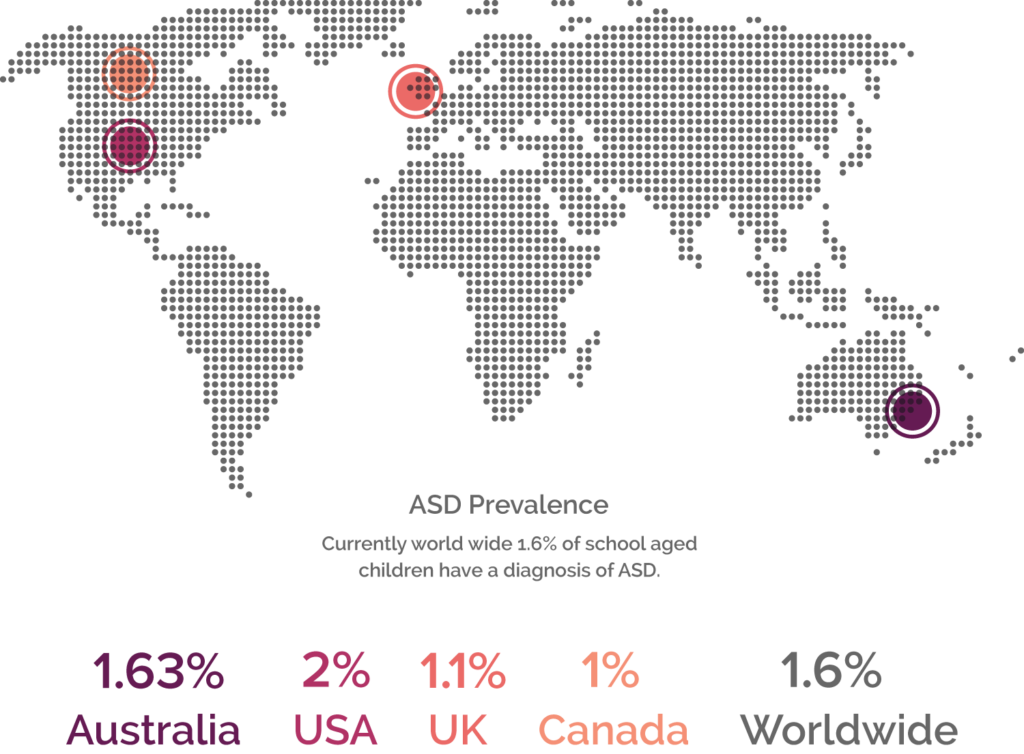if you have met one person with autism, you have met one person with autism
What is Autism Spectrum Disorder(ASD)? Autism Spectrum Disorder (ASD) is a lifelong neurodevelopmental disorder that affects how a person communicates, interacts with other people and their reactions to the world around them. ASD typically appears in early during development, often before a child enters school, however sometimes it is not diagnosed until an individual is in their teens or even adulthood.

Autism will be different for each person hence the saying ‘if you have met one person with autism, you have met one person with autism’. As the diagnosis suggests it is a spectrum. This means that each person will be affected in different ways while sharing some of the same challenges. A percentage of people on the spectrum will have learning disabilities and some may have other conditions as well.
What are some of the possible characteristics and challenges of ASD to be aware of?
Communication
- Speech may be present or have been there and then lost
- There maybe difficulty interpreting verbal and non-verbal language eg. tone of voice, sarcasm, gestures and facial expressions
- Often individual experience difficulty in responding appropriately in conversations, due to a delay in processing the information contained in the conversation
Social interaction
- Some may experience difficulty in developing friendships appropriate to their age
- A strong interest in one topic may impede social acceptance
- Some people may not recognise the emotions of others, they appear insensitive to situations
Behaviour
- May be overly dependent on routines
- Restrictive or repetitive behaviours can be present
- Highly sensitive to changes in their environment
Along with these challenges a person with ASD may also have sensory sensitivities and a learning disability.
Sensory sensitivities
- May have either an intensified or under-sensitive reaction to the five senses of sight, sound, smell, touch and taste e.g. it has been identified that requesting a person with ASD to look you in the eye may actually cause physical pain.
Learning Disabilities
- May have an Intellectual Disability(ID) eg an IQ that is below 70
- May have Attention Deficit Hyperactivity Disorder(ADHD)- inattentiveness and hyperactivity-impulsivity
ASD Prevalence

These challenges for children, teenagers and adults with ASD will fall on a continuum, with some individuals showing mild characteristics of autism and others having much more significant characteristics.
Because children with ASD do not look ‘different’ sometimes they are labelled as being naughty, rude or arrogant and parents are felt to be at fault for not disciplining the child or teaching them good manners.
What causes autism continues to be under investigation however current research is suggesting a genetic link. There is currently no cure for ASD. There is a growing awareness of ASD in the community and a range of interventions to assist learning and the individual’s capacity to function within different environments. The pages within this website will assist you to further understand what autism spectrum disorder is and help raise awareness while you navigate the journey, with your child or as a teenager or adult with an autism spectrum disorder.